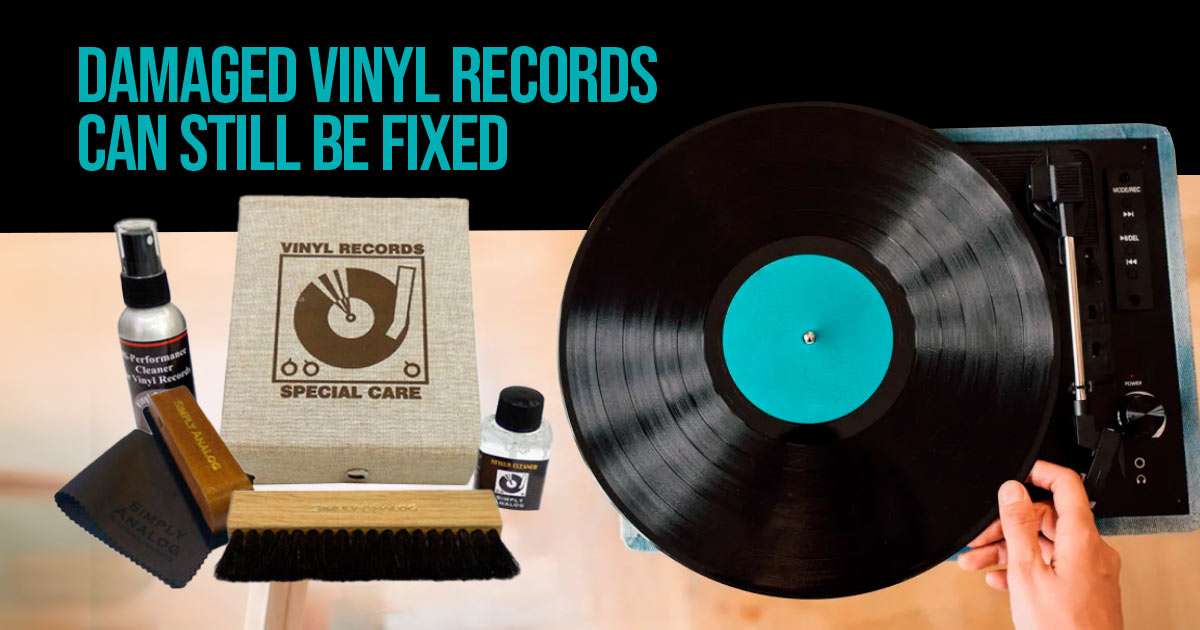Can You Still Fix A Vinyl Record That Has Scratches? How To Do It?

Amid the era of digital streaming, vinyl records have retained their charm, providing enthusiasts with a distinctive and nostalgic auditory journey. Despite their enduring popularity, vinyl records are not impervious to wear and tear, and scratches can be a common woe. The good news is that a scratched vinyl record doesn’t necessarily mean it’s destined for the bin. In this article, we’ll explore the world of vinyl record repair, providing insights into whether damaged vinyl records can still play and offering DIY solutions to remove scratches.
Can damaged vinyl records still play?
The resilience of a damaged vinyl record hinges on the severity of the scratches. While deep scratches may cause skipping or distortion, not all damages render a record unplayable. It’s essential to assess the extent of the scratches and understand that some imperfections may still allow for an enjoyable listening experience.
What causes damage to vinyl records?
Vinyl records, despite their enduring charm, are not immune to damage. Understanding the sources of potential harm is crucial for preserving the quality of these musical treasures.
Mishandling
Improper handling is a common culprit behind vinyl record damage. Careless placement, dropping, or mishandling during the process of taking the record out of its sleeve can result in scratches. Even seemingly insignificant scratches have the potential to disturb the seamless movement of the stylus within the grooves, influencing the overall quality of the sound.
Improper Storage
The preservation of vinyl records heavily depends on how they are stored. Extreme temperatures, high humidity, or direct sunlight exposure can distort the fragile composition of the record. Warping not only distorts the shape of the record but can also lead to skips during playback. Additionally, storing records at an angle rather than vertically can exacerbate the risk of warping.
Worn-out or Misaligned Stylus
The stylus, the small needle that engages with the record grooves, is a critical component in vinyl playback. A worn-out stylus or one that is misaligned can cause excessive friction, leading to scratches on the record surface. Regular maintenance and timely replacement of styluses are essential to prevent unnecessary wear and tear.
How do I remove scratches from vinyl records?
The quest to rescue a scratched vinyl record involves various methods, each with its own level of complexity and risk. Here’s a closer look at some popular DIY approaches:
1. Cleaning
Before attempting any repair, a pristine surface is paramount. Utilize a record-cleaning solution or a specialized record-cleaning machine to clean the record. This step removes dust and debris, providing a clean canvas for subsequent repair efforts. Proper cleaning not only improves the effectiveness of repair methods but also enhances overall playback quality.
2. Wood Glue Method
The use of wood glue is a commonly employed DIY technique for dealing with scratches. After thoroughly cleaning the record, a thin layer of wood glue is applied over the scratched area. As the glue dries, it adheres to the embedded dirt and debris within the scratch. Once dry, the peeled-off glue aims to lift away contaminants, potentially improving the record’s playback quality.
3. Needle Method
For those seeking a more delicate touch, the needle method involves using a sewing needle attached to a cone. This method requires a steady hand and precision. By gently traversing the groove and altering the scratch’s depth, the needle method aims to minimize the damage’s impact on the overall listening experience. However, caution is paramount to avoid exacerbating the scratch.
4. Sandpaper Method
A more daring solution is the sandpaper method, which involves using wet, fine sandpaper to sand the scratched areas. Careful strokes following the grooves aim to level the surface. While this method can be effective in minimizing scratches, it carries the risk of altering the record’s appearance and potentially affecting its sound quality.
5. Ice Cube Method
The ice cube method, though simpler, is considered less reliable. Rubbing an ice cube gently over the scratches hypothesizes that the melting ice assumes the shape of the grooves, minimizing the scratch’s impact. However, due to water density, this method is considered a temporary solution and may not yield consistent results.
What Can You Do to Prevent Future Damages?
Taking proactive measures is essential to safeguarding the durability of vinyl records and preventing potential damage. Consider the following preventive strategies:
1. Handle with Care
When handling vinyl records, exercise caution and gentleness. Avoid dropping or sliding records in and out of their sleeves hastily. Practicing caution can substantially minimize the likelihood of scratches resulting from mishandling.
2. Proper Storage
To avoid warping, store vinyl records upright in a cool, dry location, away from direct sunlight. Investing in dedicated storage solutions, such as record crates or shelves, can provide an optimal environment for preserving your vinyl collection.
3. Maintain Your Equipment
Frequently inspect and maintain your turntable and stylus. Ensure the stylus is not worn out or misaligned, as this can contribute to scratches. Following the manufacturer’s guidelines for turntable maintenance can extend the life of both your equipment and your records.
4. Quality Record Cleaning Kit
Purchase a high-quality record cleaning kit to maintain your vinyl’s peak condition. Routine cleaning eliminates built-up dust and debris, minimizing the chance of scratches during playback.
By integrating these preventative steps into your vinyl maintenance routine, you can relish your collection for an extended period, thereby reducing the necessity for extensive repairs. Remember, a proactive approach to vinyl record maintenance is key to preserving their unique and timeless sound.
Damaged Vinyl Records Can Still Be Fixed
A scratched vinyl record doesn’t spell the end of its musical journey. Employing suitable methods and a meticulous strategy, DIY repair techniques can frequently rejuvenate records that have sustained damage. While some risks accompany these methods, the potential reward of salvaging a beloved album is worth the effort.
Whether you opt for the wood glue, needle, sandpaper, or ice cube method, each approach requires patience and precision. However, it’s crucial to acknowledge that not all records can be fully restored, and there’s always a level of risk involved in attempting repairs.
As vinyl records continue to hold a special place in the hearts of music enthusiasts, the art of repair ensures that their captivating tunes can be enjoyed for years to come. Embrace the journey of preserving and restoring your vinyl collection, turning scratches into mere echoes of the past.

